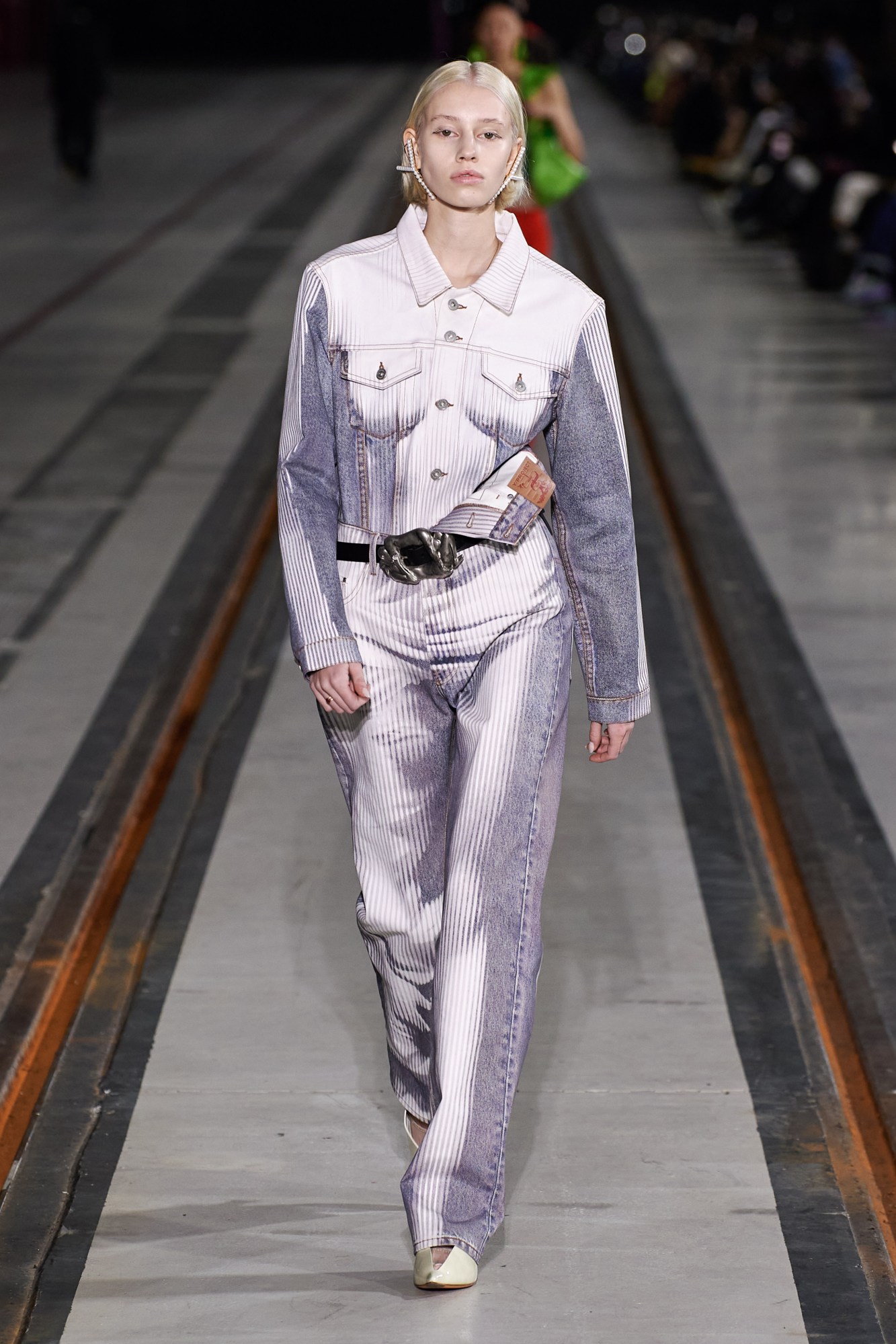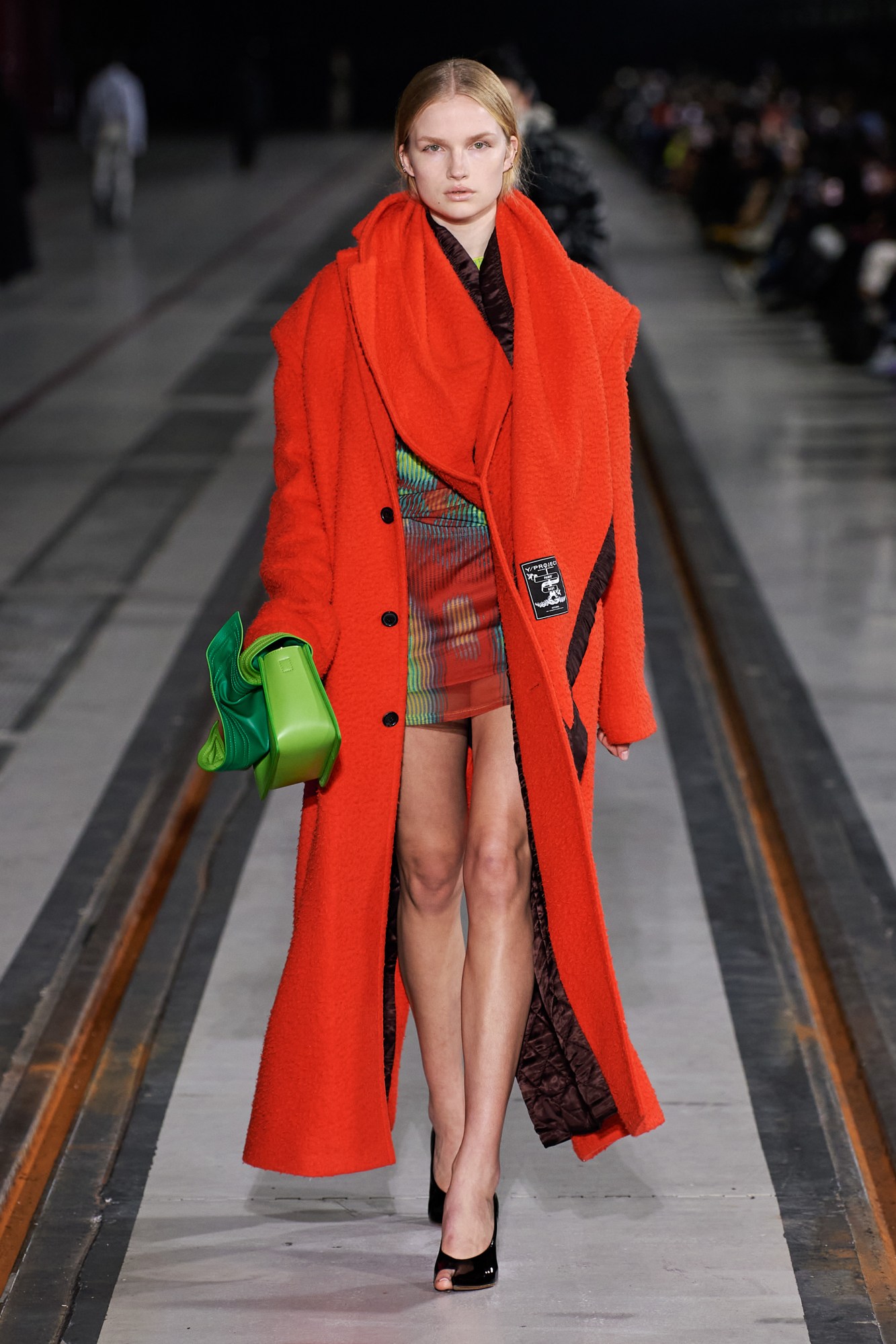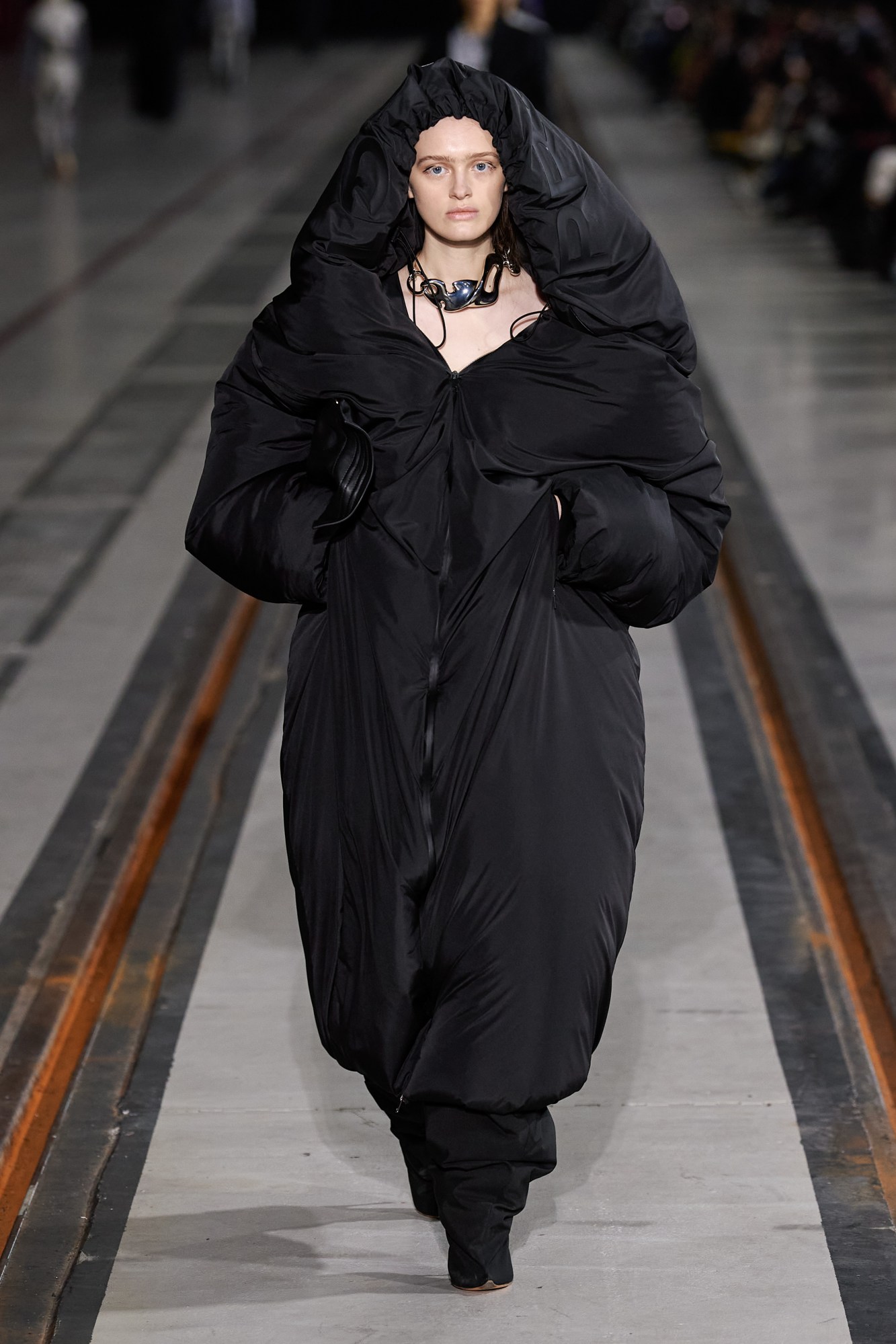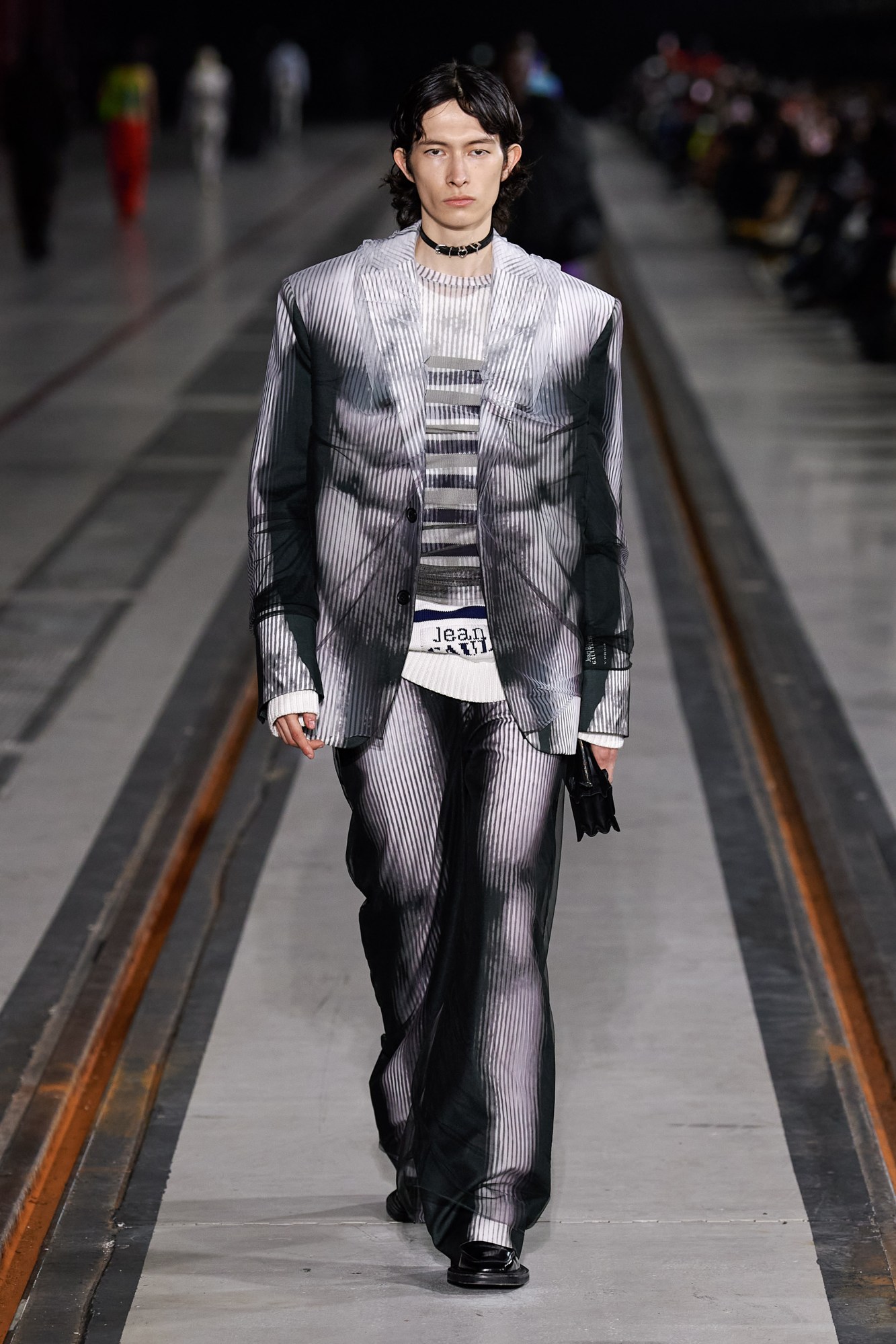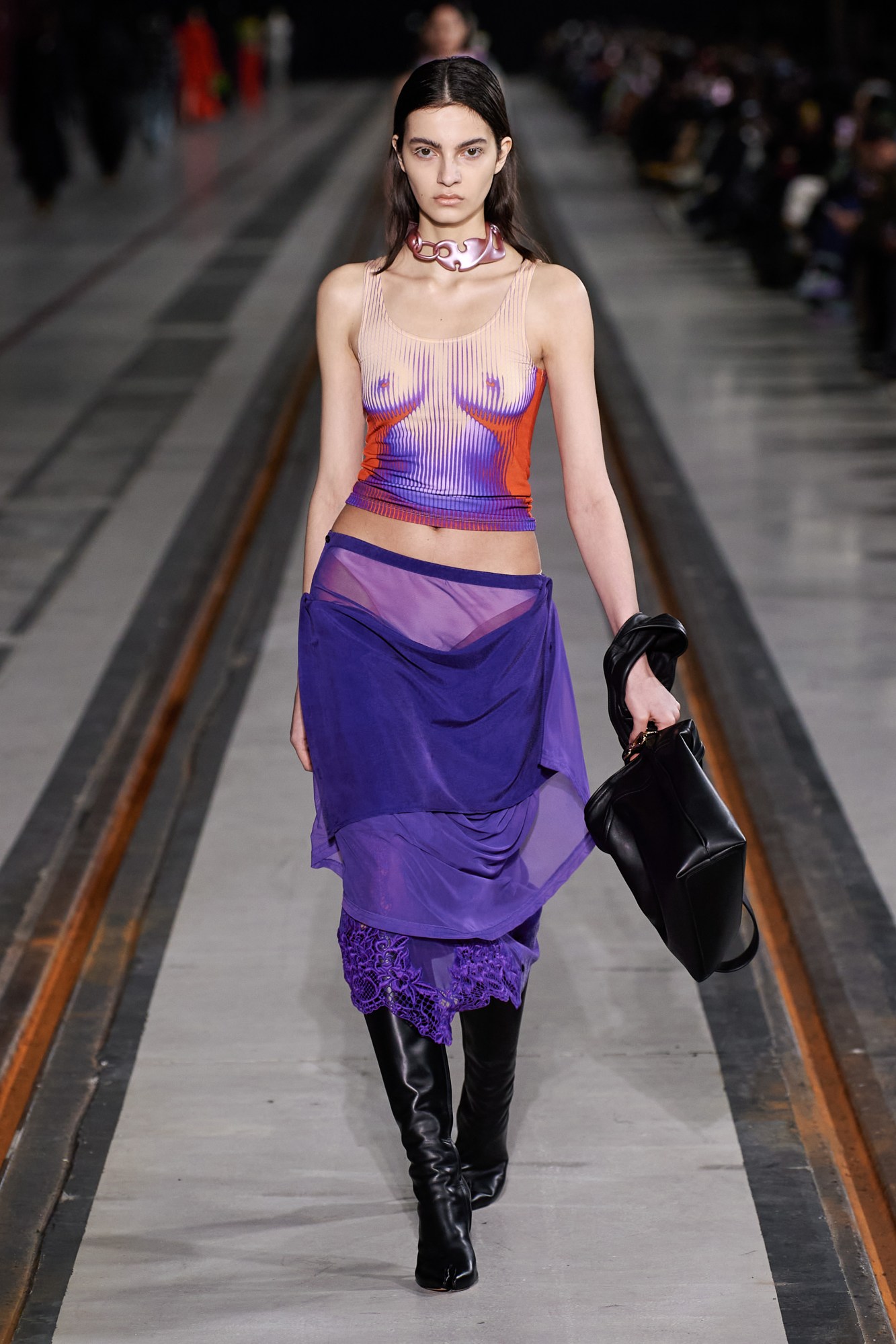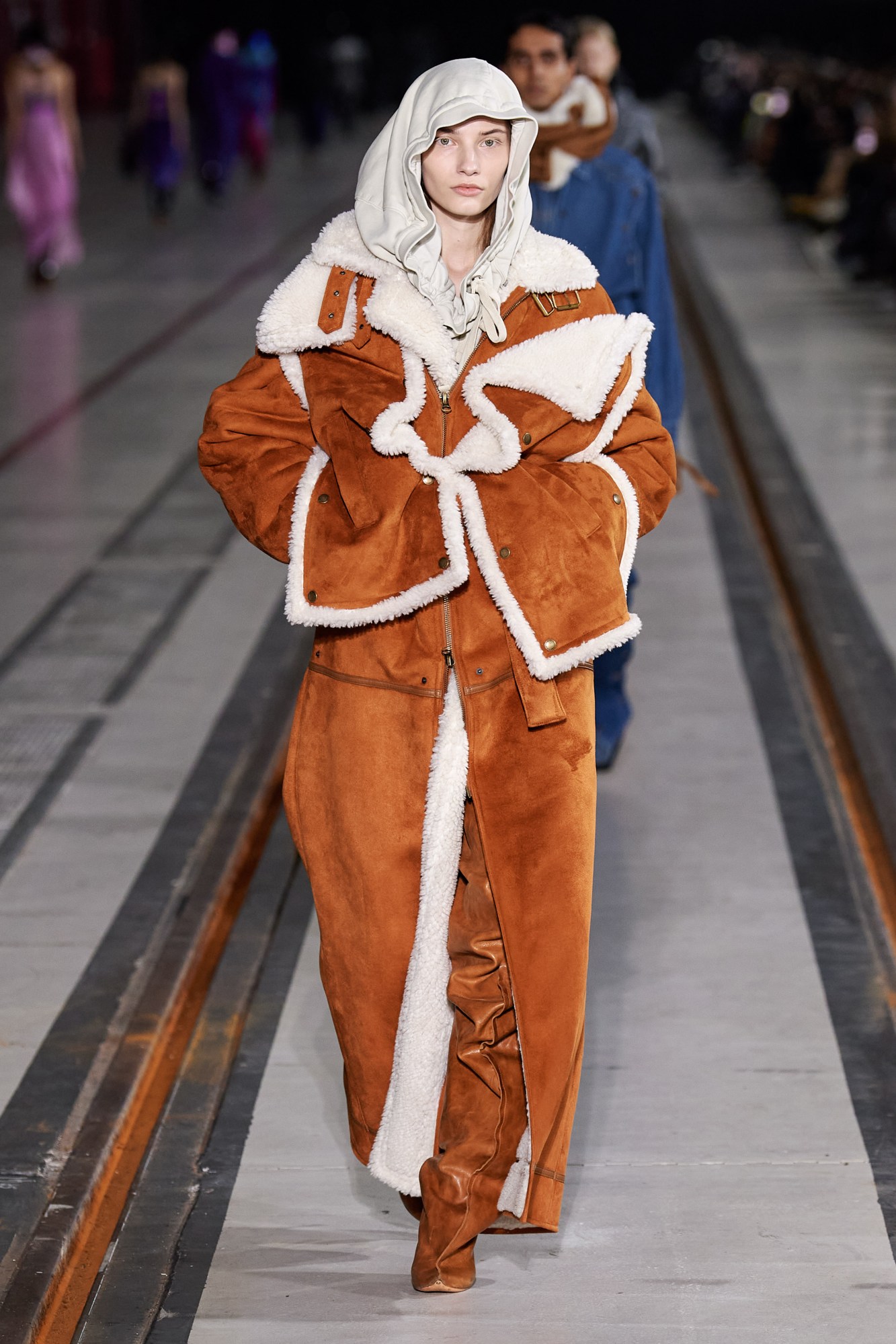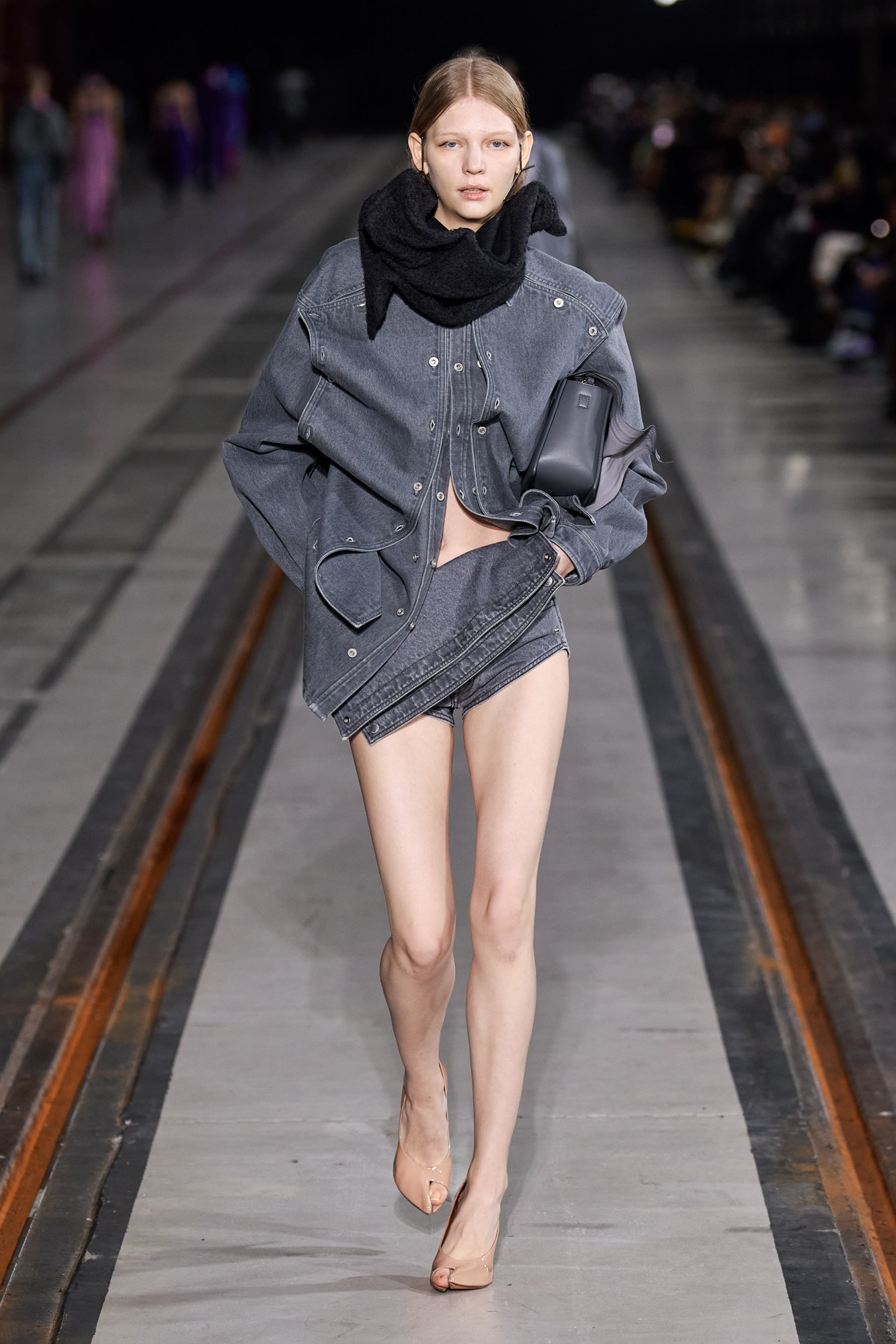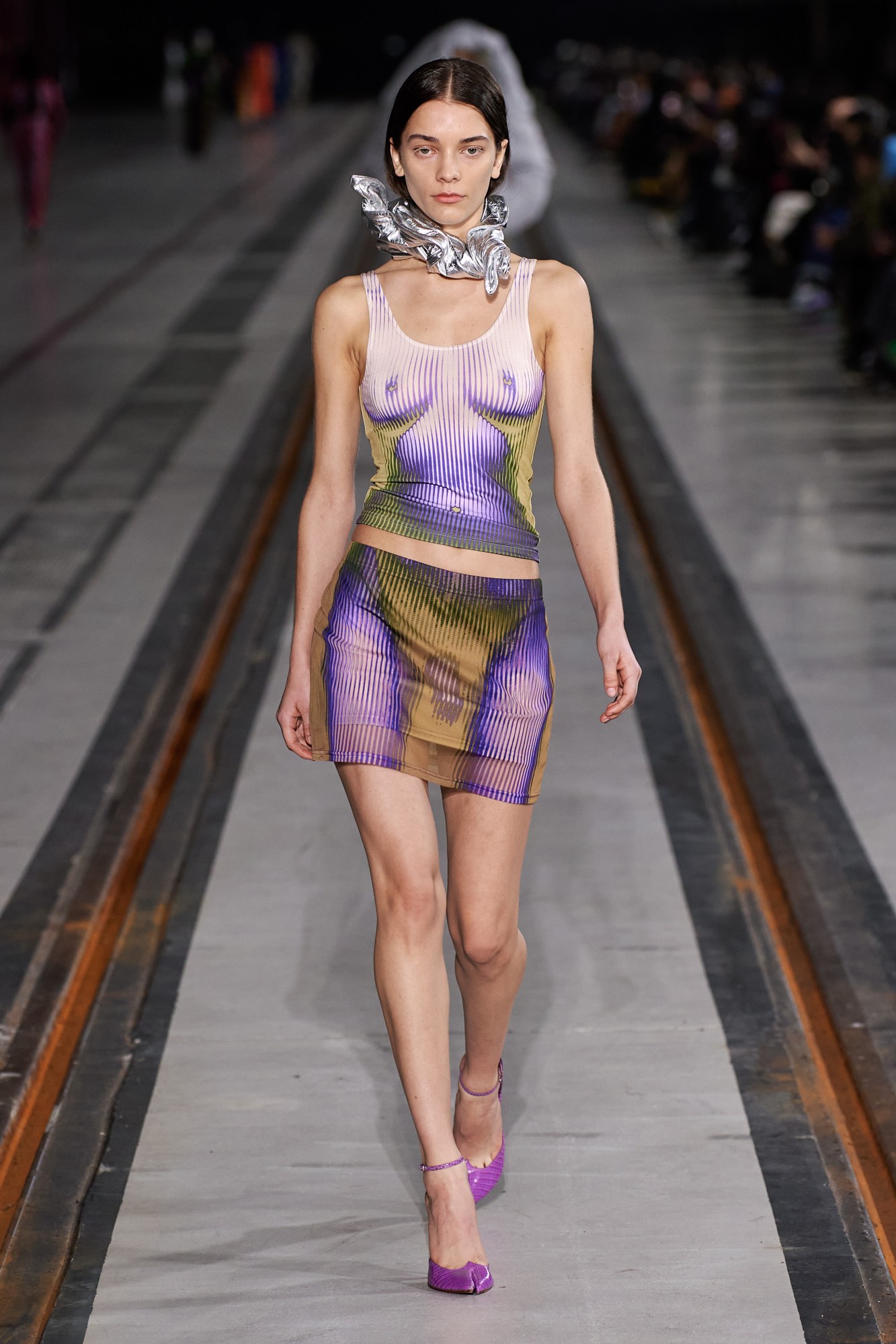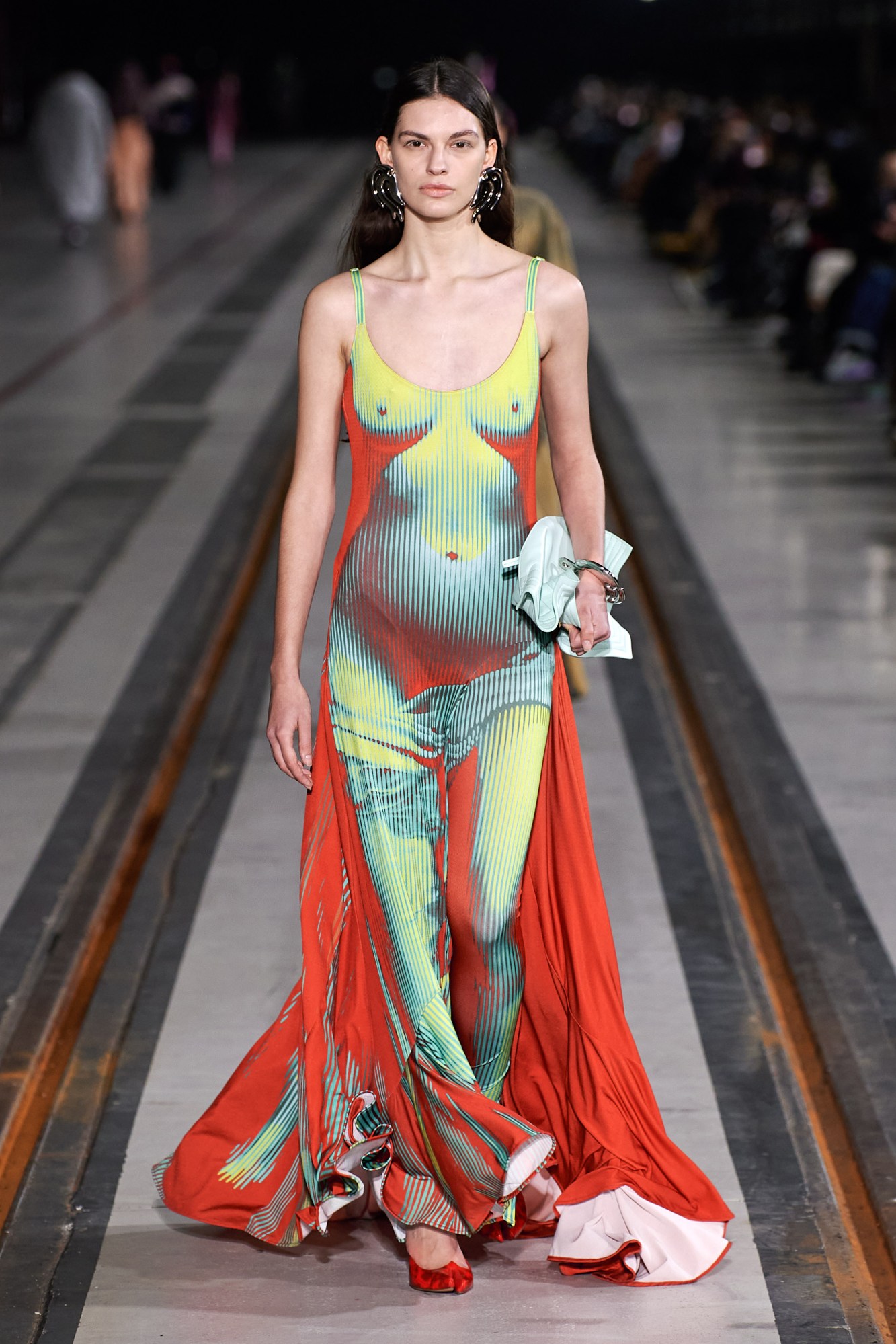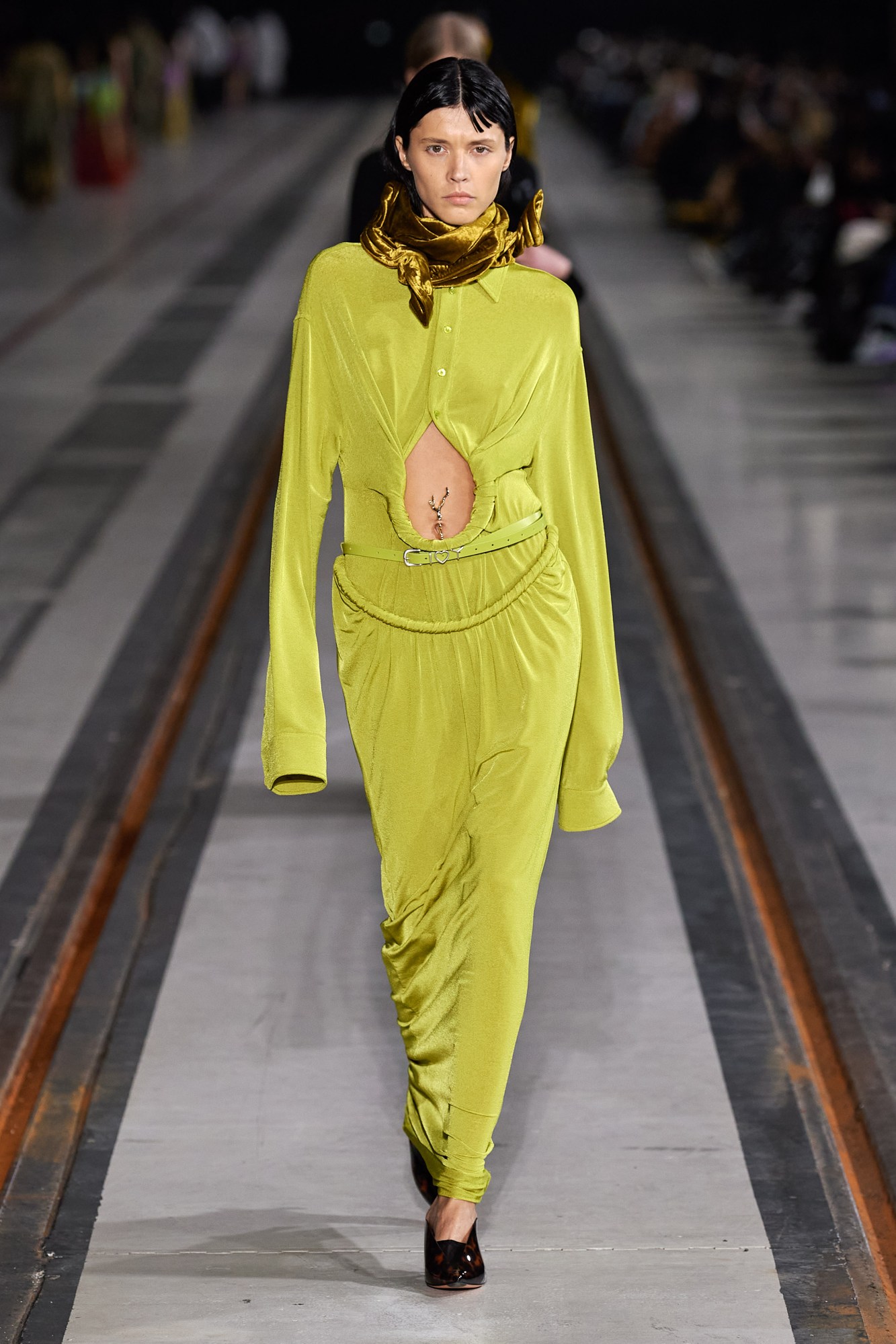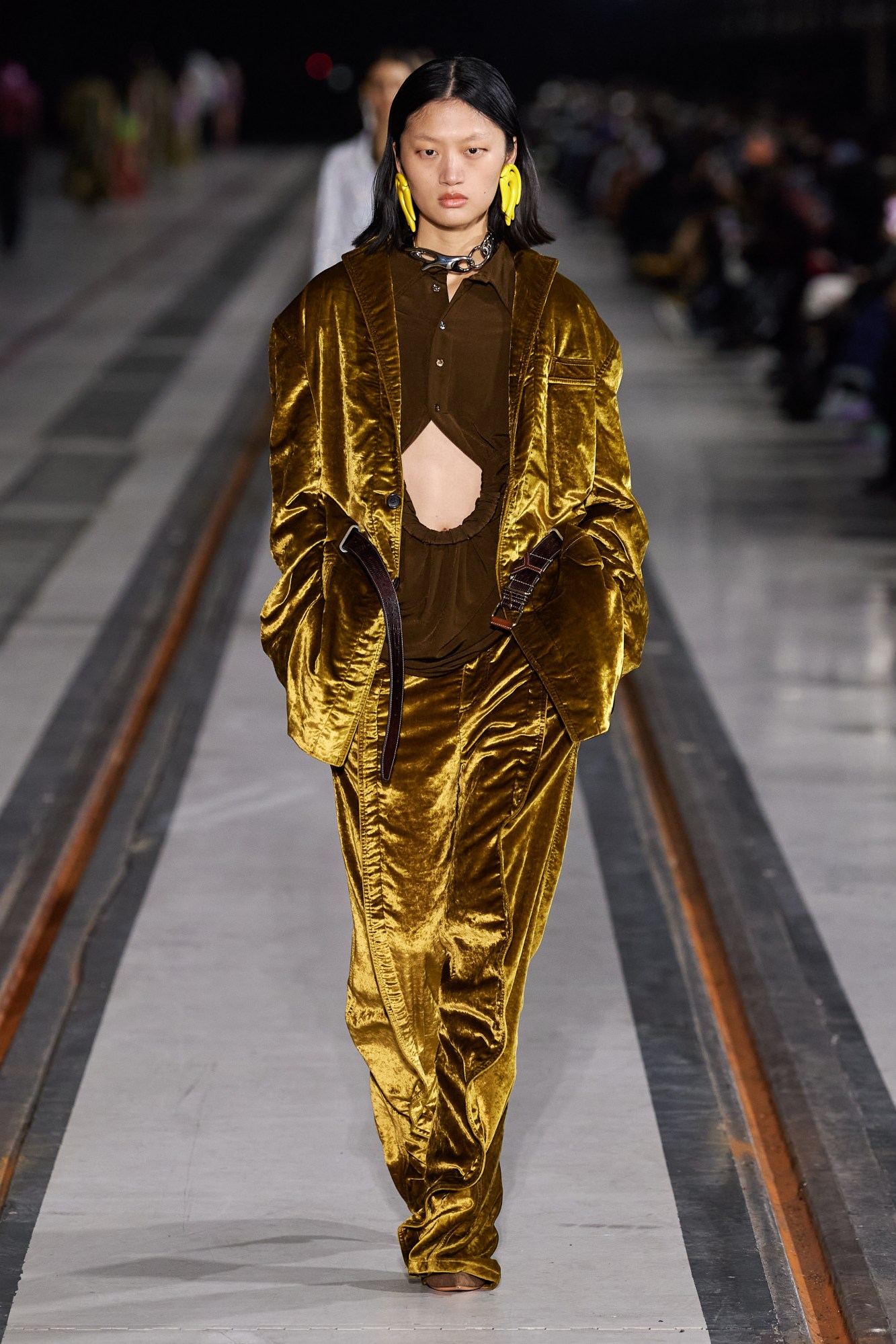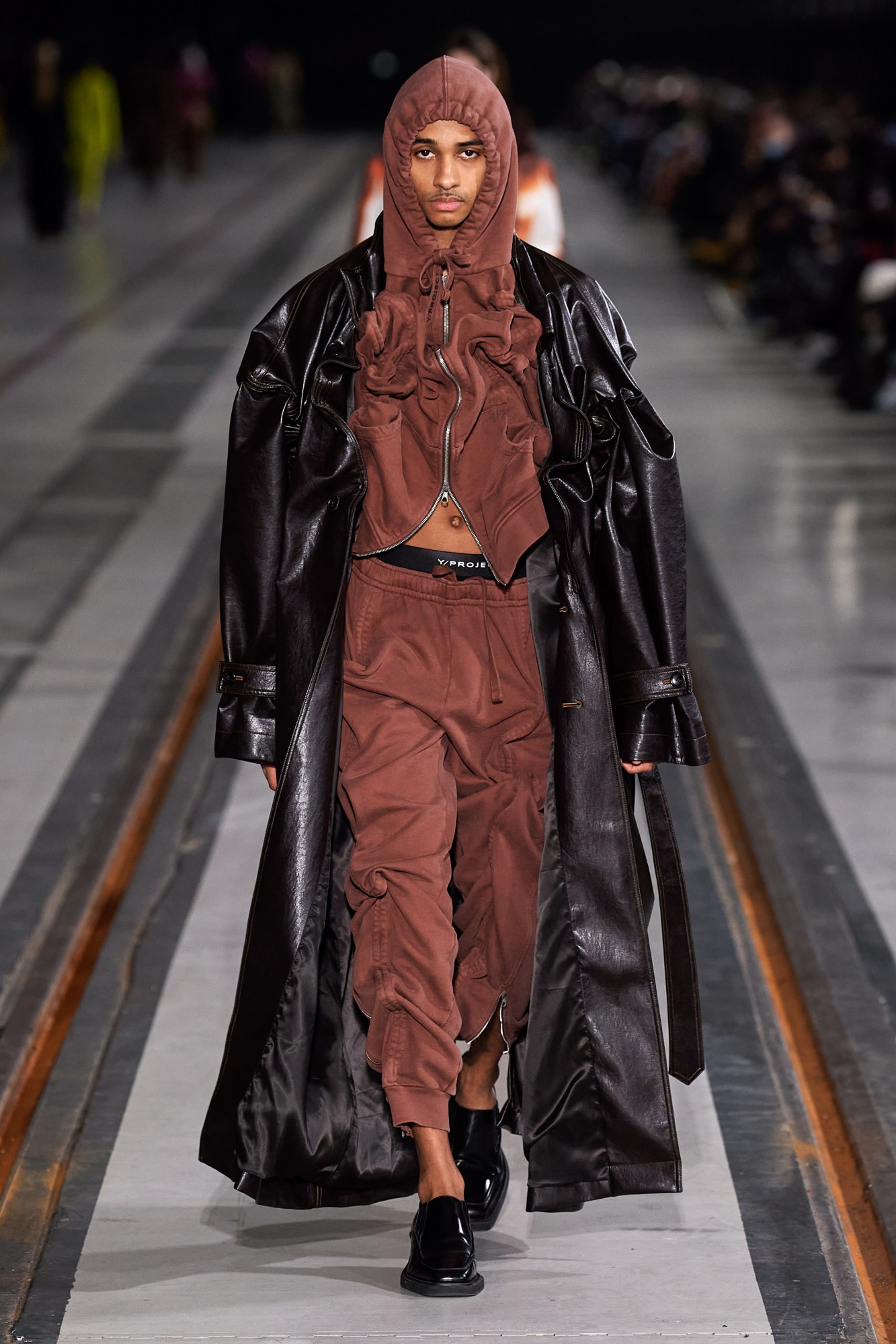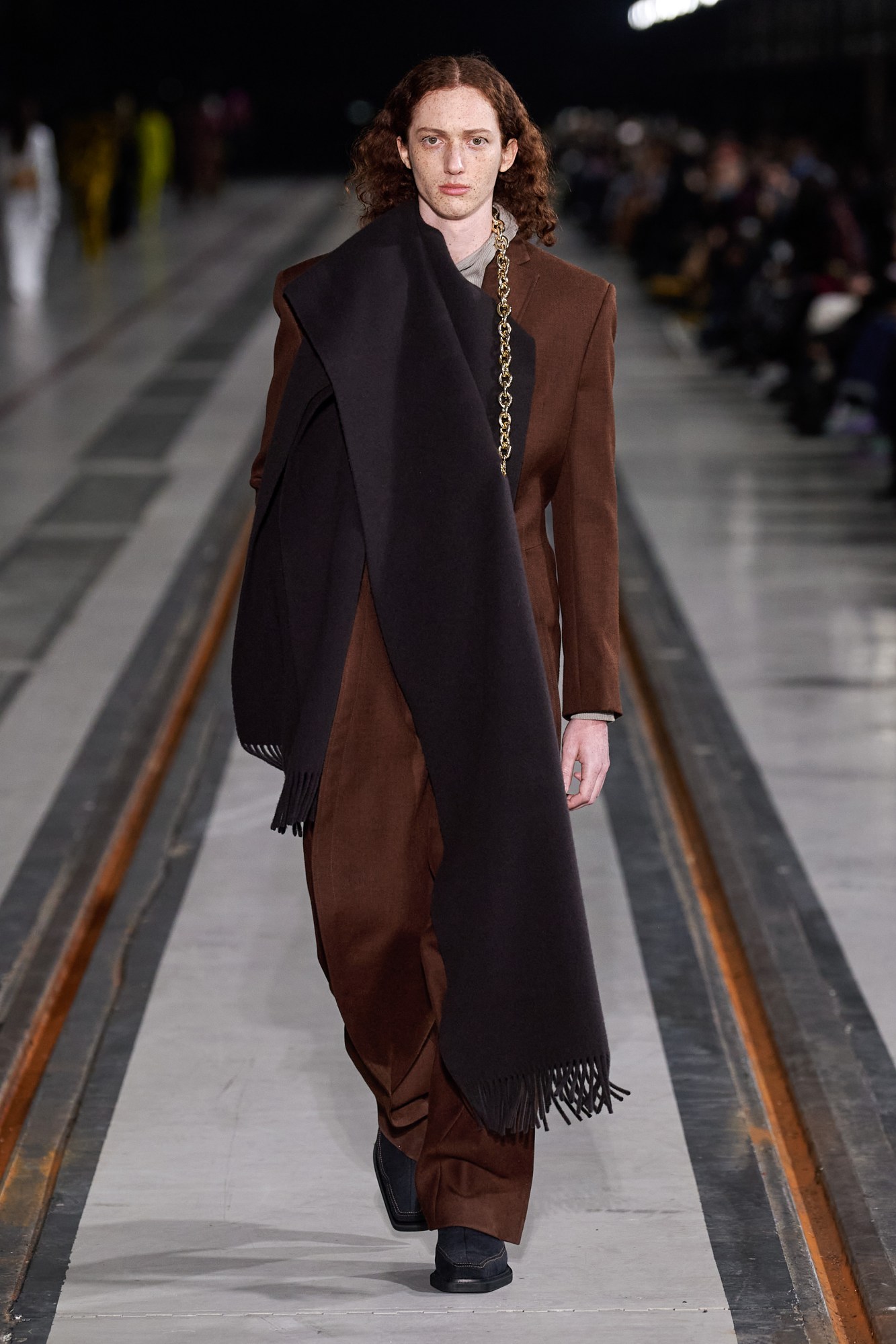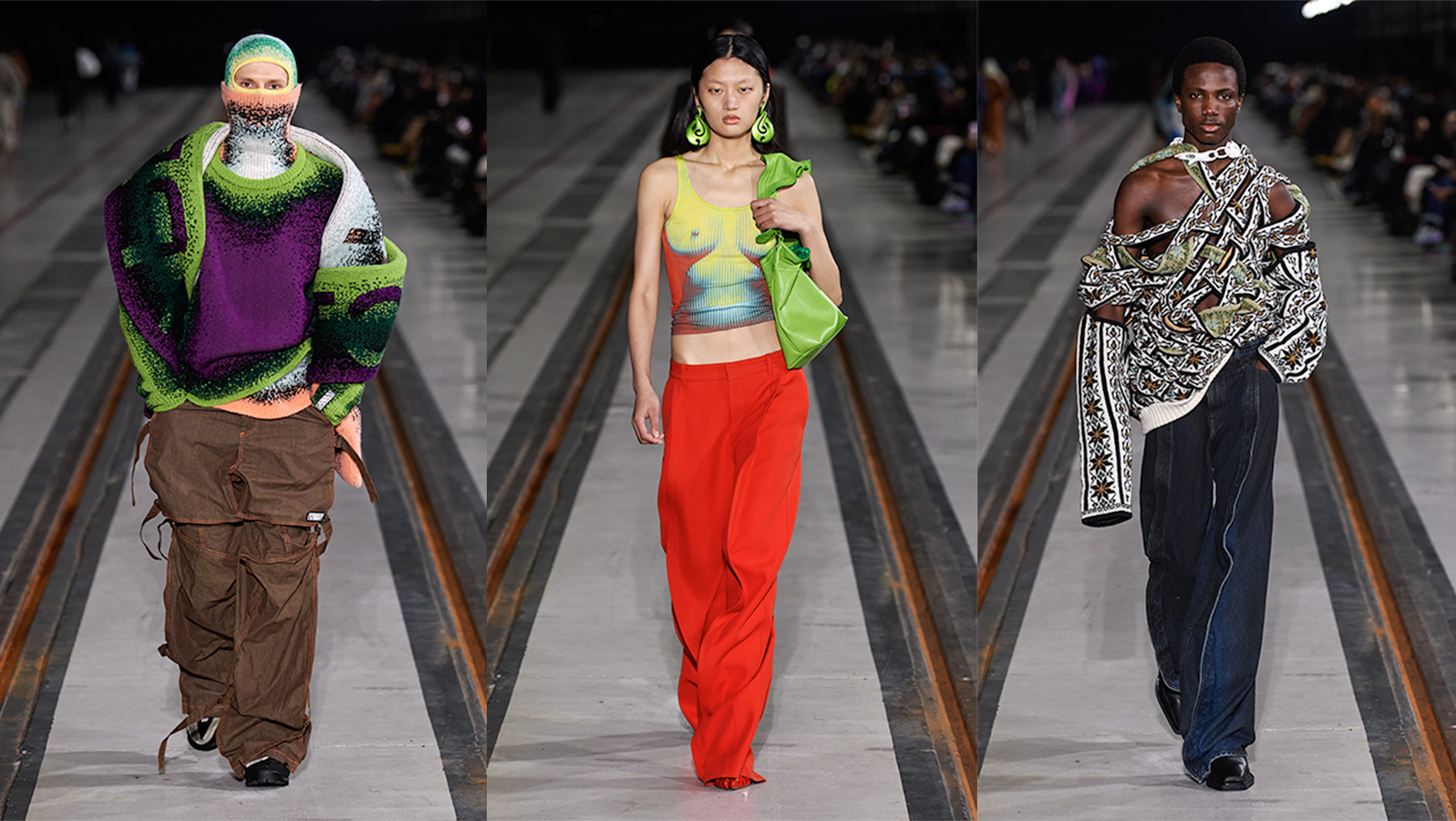Last night’s Y/Project show took place in a vast DPD warehouse, with seats lining the train track that brings in cargo to be shipped off to every corner of Paris. It was set to an operatic aria, a suitably dramatic backdrop for the high-octane volumes and shapes that were applied to an extensive wardrobe of staples. Glenn Martens took over Y/Project nine years ago — this hasn’t been an overnight success — but yesterday’s show made it clear that he is truly in his stride as one of the most interesting designers showing in Paris today. Just when you think no stone has gone unturned in the annals of fashion history, he manages to conjure up something new. His clothes command your attention — and hold it.
Over the years, some of the Belgian designer’s big-win pieces have been the result of collaborations, to which he is no stranger. Well, fans of those will be pleased to hear that this was perhaps his best yet. Next week, Y/Project will present a collection for the haute couture division of Jean Paul Gaultier, following in the footsteps of Sacai’s Chitose Abe. While working on that, though, Glenn took the opportunity to dive into the house’s archives and decided to bring a touch of JPG to his own ready-to-wear, too. Collaboration is, after all, a two-way street.
Pixelated, infrared-scanned trompe-l’oeil prints of the naked male and female body (mixed and matched, of course) — first seen in Jean Paul Gaultier’s catwalk spectacles in the mid-90s, but also quite “dad’s novelty apron” — fizzed throughout the show. By now, those printed mesh pieces are a part of fashion folklore, with the original pieces – often shown as part of thematic tableaus with high-camp styling commanding a pretty penny on the resale market.
That makes Glenn’s choice to revive them here a smart and bankable move, tapping into pre-existing demand. Rather than simply copy and paste, however, he also refreshed them with a contemporary sharpness better suited to our cleaner, more sanitised times. Layers of featherlight mesh “peel-off” pieces, so slinky and sexy and silly, were the perfect counterpoint to the technically-complex tailoring, bulbous down jackets and ruffles of UGG-ish shearling. These are clothes that hit a high note of nostalgia for archive-obsessed Gen-Zers — and, to be honest, the people who missed out on it the first time round. You can imagine them being snapped up on Depop and worn to Euphoria High, where they wouldn’t be batted-an-eyelid-at in the hallways — even if they do trigger Instagram’s nipple censors.

But there was more Glenn to this than Gaultier. The techno-sherbet colours were echoed elsewhere, too. Bright, pixelated multiple-collared knits in mélanges of Teenage Mutant Ninja tones were a highlight, quite literally, layered up in sets of balaclavas, sweaters and double scarves. Logos were seen on little clips for the first time during his tenure — and served as a reminder that the label has never had to rely on one, which is pretty remarkable when you think about it. Instead, Glenn has built his reputation on rhizomatic silhouettes and innovative pattern cutting — clothes! He is a fashion designer who has made a name for himself designing actual garments, rather than graphic talismans.
You see, despite his obsession with archetypal garments — denim jackets, chunky scarves, pleated trousers, blue cotton shirts — nothing at Y/Project is what it seems. A dress that may appear to be a straightforward slinky gown is in fact skirted with leggings, a striped shirt with folds has been draped and pinched into place with clever construction, trousers take on the sculptural undulation of a lava lamp in motion. All those swirling seams and scrunched-up silhouettes are the result of meticulous sartorial engineering — the kind of clothes that look complex but are as easy to slip into as a T-shirt, and can be worn in a multitude of ways. Funnily enough, the pieces that could be complex — dresses, tailoring, coats; the kind of lofty things fashion people like to call “investment pieces” — are actually much simpler than more casual-leaning items like knitwear or crispy blue denim. Drawstrings, arguably the thing that gives sportswear its ease, were put in place as levers and facets with which garments can be transformed into micro proportions or maxi lengths. Three silhouettes in one piece of clothing? Now, that’s what you call bang-for-your-buck.
It’s fitting that the setting was a commercial warehouse. The Belgians (Glenn is from Bruges and studied in Antwerp) have always had a knack for trade, courtesy of the small country’s vibrant ports — and here was a collection that tapped into the zeitgeist of our collective desire. By August, when this collection hits stores, it will no doubt be boxed up and delivered to wardrobes around the world.
